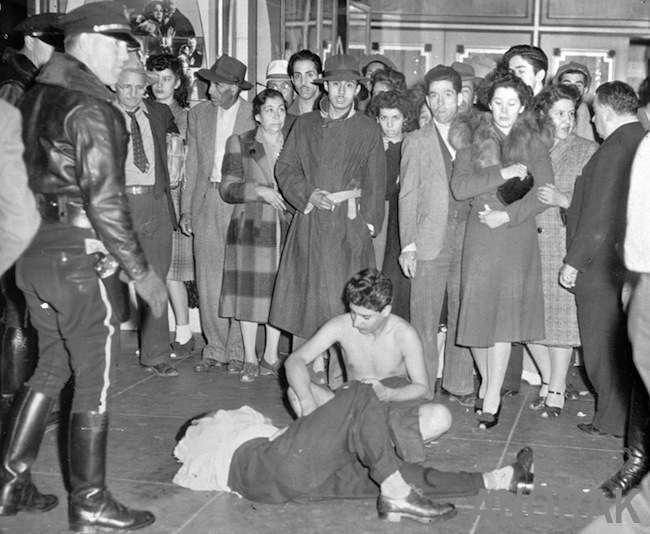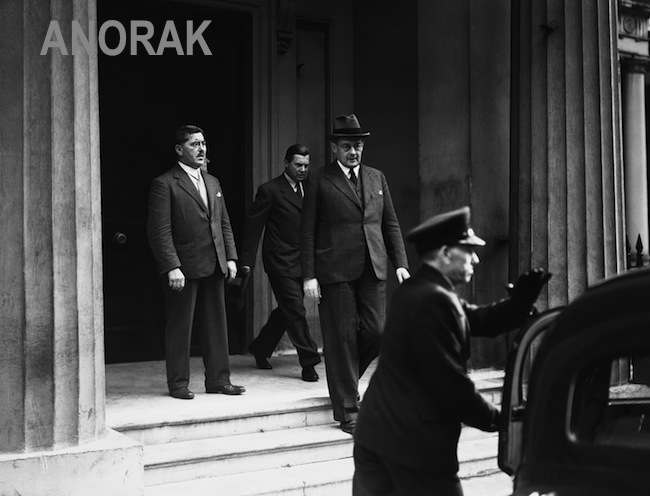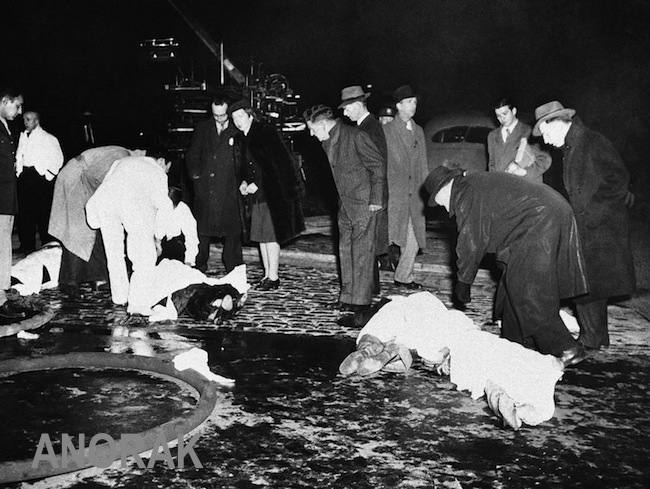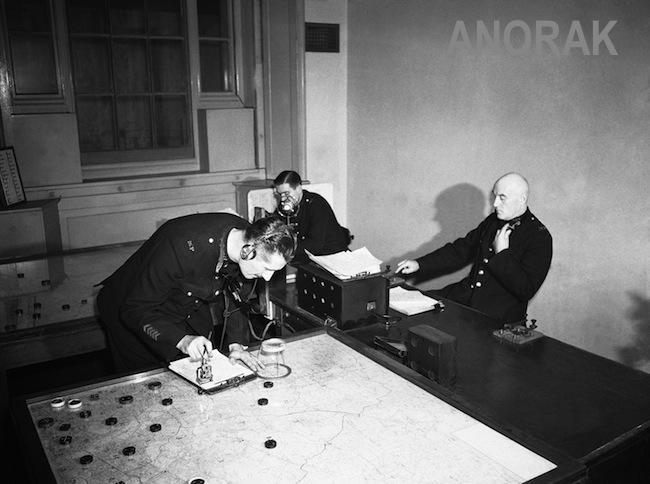WHAT was it like for the police between 1939 and 1945? We’ve raided the archives and produced a montage of photographs that reveal a taste of events in the War years that have been overshadowed by bigger stories. The captions by the Associated Press and Press Association writers are added flavours of the times. A policeman’s lot was not always happy lot, whether in the UK, Italy, France, Germany or the US, Look out for Bridget Hitler’s tax problem, zoot suits fights, Detroit race riots, German terror and Paul Colette…
These youths, one stripped of all his clothes and the other badly beaten, fell victim to raging bands of servicemen who scoured the streets in Los Angeles, June 20, 1943, looking for and beating zoot suited youths. The servicemen blame the zoot suited youths for numerous unprovoked assaults on their colleagues. (AP Photo)
Escorted by two police cars, Dr. Kordt, German charge Dâ affaires in London, left, the German embassy on September 3, a few hours after a state of war had been declared between great Britain and Germany. Dr. Kordt, German charge D’affaires in London, leaving the German embassy on Sept. 3, 1939. Note the police escort. (AP Photo)
Victims of the fire in Coconut Grove Night Club, lie stretched out on a Boston street, Nov. 28, 1942, while spectators and friends hunt for relatives, and ambulance crews check for signs of life. Boston police estimated the death toll would near 150. (AP Photo)

Making ready to hang five Germans who killed American airmen
In the Information room at Scotland Yard, Westminster, London, the police, with the assistance of the general public are fighting the greatest crime wave to sweep the country since 1919. The system employed is si ple, when calls from the public reach the Information room, a red light flashes giving it priority, the message is taken down, and passed to a room, where there are four large maps of London. Coloured counters on the map locate every wireless car and police-boat. Incidents are noted and the nearest two minutes, the car is on its way to the scene of the crime. A network of fast police-cars can quickly be formed to prevent a get-away. A corner of the âInformation roomâ at Scotland Yard, London on Dec. 14, 1945, showing left to right police officer using magnifying glass to find a street location and about to time-stamp the report. The Discs represent patrol cars and their positions at the time in London. A police officer giving verbal instructions through a microphone to patrol cars

The police launched a counter-blow to the crime wave, the biggest to sweep the country since 1919, by a systematic comb-out of the metropolis on December 14. The whole of the west across main roads and bridges. Besides pedestrians and occupants of motorcars, buildings were visited. Motor lorries and private cars were used by the police who were assisted by service police. A police suspect awaits transport to a police station in a Canadian provost truck at the corner of Piccadilly Circus and regent street, London during the police comb-out on Dec. 14, 1945. (AP Photo)
Would you like to support Flashbak?
Please consider making a donation to our site. We don't want to rely on ads to bring you the best of visual culture. You can also support us by signing up to our Mailing List. And you can also follow us on Facebook, Instagram and Twitter. For great art and culture delivered to your door, visit our shop.





